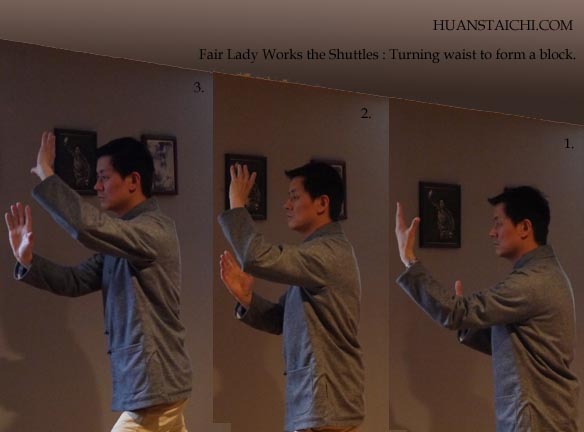Many of my students
have commented that learning to do Tai Chi correctly is not an easy task. Some
of them have learned simplified form from other teachers found difficult
learning the detailed traditional 85 forms. By simply repeating what the
teacher has shown you, you are not improving your skills to their fullest
potential. How can we really learn form and improve our Tai Chi skills? Here
are some suggestions that you could benefit from.
Set an
approachable goal
When some beginners
first come to our studio, they use the instructor’s performance and other
intermediate students’ performance as a model. They feel that they will perform
at this level within a month or two. This seems like a reasonable goal, but
looks can be deceiving! Of course, the form of the instructor and other
intermediate students required years of practice and learning.
As a beginner, your goal is not to be able to have the same form and moves as the instructor. Rather, I recommend that you learn the first few moves and do them well. Only with an approachable goal will you conquer the fear of learning and ease the pressure of not learning enough movements so that you may move forward.
Remember, learning
every skill takes effort. It may take a short time to learn some skills; for
others it may take longer. Your own ability and the method used by the
instructor are two important factors in determining how long it will you take
to learn your form.
The correct way
While some students
don’t practice often and others practice quite a bit, the ones who
practice often don’t always seem to improve their form significantly. Why is
this the case? You might think that those who practice more should have
better form and more advanced skills. However, the fact is this is not true.
We know that if you want to remember something, it needs to enter your long-term memory. In order for this to happen, you first need to enter the movements in your short-term memory. Naturally, this requires practice. This is common knowledge. This logic is sound if you are doing the right movements. If your movements are not correct, then you are repeating the wrong movements and you are entering the wrong information into your short and long-term memories, thus not spending your time wisely.
That’s why when my
father was teaching private students, he didn’t want someone to go to the next
step if the current move had not been mastered. In a large class, when a
teacher can’t correct every detail of every student’s movements, the best
approach is to try to just learn one or two movements at a time and to learn
them correctly. Ask questions or just ask teacher to come correct you in
person. For this reason many students also book private lessons to master some
movements.
Part vs. Whole
As I often mention
in class, everyone focuses on different aspects of the instructor’s teaching.
It’s like the story of “the blind men and an elephant,” in which
every one thinks the part they touch is the shape of the whole elephant.
Essentially, everyone’s focus and take-aways from class are different.
Most beginners will pay more attention to the instructor’s hand movements
instead of body movements. However, as I often say, “Tai Chi is a whole body
exercise. We want to concentrate on whole body movements instead of partial
body movements.”
Visual Vs.
Real
As I mentioned
above, even students who pay attention and try to concentrate on the whole body
movements might not be repeating the movements correctly. As Tai Chi is
considered an internal martial art, what you appear to be may not be what is
happening in reality. In Karate, an external martial art, a hand block and
punch is a hand block and punch. In Tai Chi, it can be a twist of the whole
body linked to your arm which rotates to form a block. Pay attention to your
instructor's movements and ask questions to figure out how to make this
special move.
Steps
Steps determine the
success of your learning. If you made the wrong first step, the second step
could be wrong as well. For example, in Tai Chi if you haven’t transferred
weight to one leg, then you can’t lift the other leg. Making sure you have the
right sequence will make your Tai Chi smooth.
Repetition
Finally, let’s return to the topic of repetition. If
we take all the suggestions above into consideration, we can now talk about
repetition. Practice makes perfect! That’s why I always tell my students at end
of the class, “Please go home and practice!”
2016 Copyright by Huan's Tai Chi
2016 Copyright by Huan's Tai Chi



 Follow on Facebook
Follow on Facebook Follow on Twitter
Follow on Twitter
